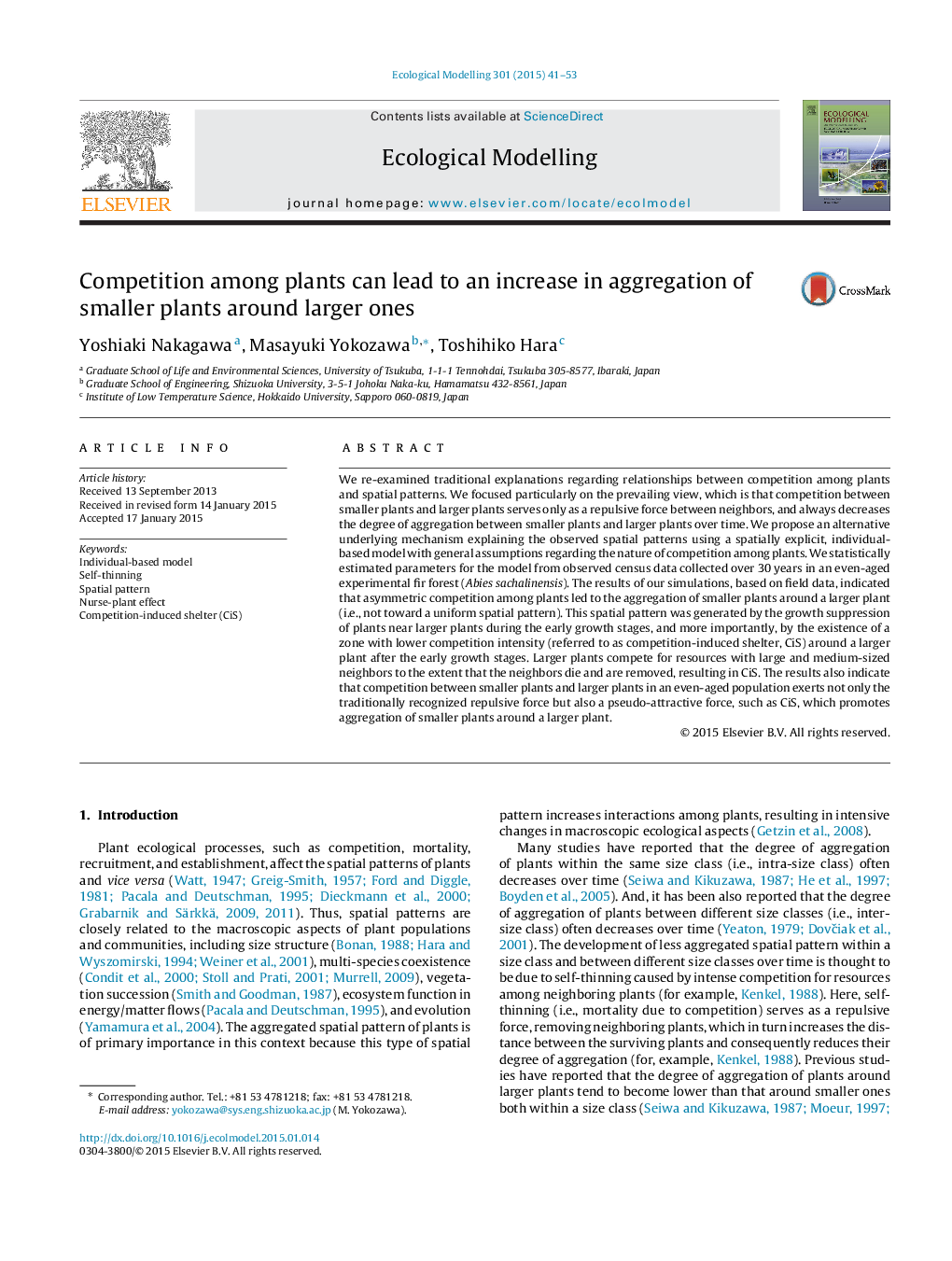| Article ID | Journal | Published Year | Pages | File Type |
|---|---|---|---|---|
| 6296666 | Ecological Modelling | 2015 | 13 Pages |
Abstract
We re-examined traditional explanations regarding relationships between competition among plants and spatial patterns. We focused particularly on the prevailing view, which is that competition between smaller plants and larger plants serves only as a repulsive force between neighbors, and always decreases the degree of aggregation between smaller plants and larger plants over time. We propose an alternative underlying mechanism explaining the observed spatial patterns using a spatially explicit, individual-based model with general assumptions regarding the nature of competition among plants. We statistically estimated parameters for the model from observed census data collected over 30 years in an even-aged experimental fir forest (Abies sachalinensis). The results of our simulations, based on field data, indicated that asymmetric competition among plants led to the aggregation of smaller plants around a larger plant (i.e., not toward a uniform spatial pattern). This spatial pattern was generated by the growth suppression of plants near larger plants during the early growth stages, and more importantly, by the existence of a zone with lower competition intensity (referred to as competition-induced shelter, CiS) around a larger plant after the early growth stages. Larger plants compete for resources with large and medium-sized neighbors to the extent that the neighbors die and are removed, resulting in CiS. The results also indicate that competition between smaller plants and larger plants in an even-aged population exerts not only the traditionally recognized repulsive force but also a pseudo-attractive force, such as CiS, which promotes aggregation of smaller plants around a larger plant.
Related Topics
Life Sciences
Agricultural and Biological Sciences
Ecology, Evolution, Behavior and Systematics
Authors
Yoshiaki Nakagawa, Masayuki Yokozawa, Toshihiko Hara,
